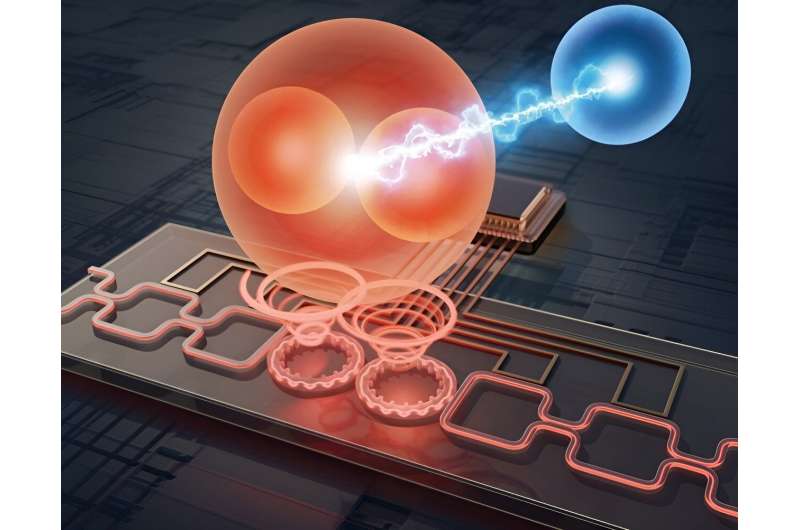This article has been reviewed according to Science X's editorial process and policies. Editors have highlighted the following attributes while ensuring the content's credibility:
fact-checked
peer-reviewed publication
trusted source
proofread
Scientists crack new method for high-capacity, secure quantum communication

Scientists have made a significant breakthrough in creating a new method for transmitting quantum information using particles of light called qudits. These qudits promise a future quantum internet that is both secure and powerful. The study is published in the journal eLight.
Traditionally, quantum information is encoded on qubits, which can exist in a state of 0, 1, or both at the same time (superposition). This quality makes them ideal for complex calculations but limits the amount of data they can carry in communication. Conversely, qudits can encode information in higher dimensions, transmitting more data in a single go.
The new technique harnesses two properties of light—spatial mode and polarization—to create four-dimensional qudits. These qudits are built on a special chip that allows for precise manipulation. This manipulation translates to faster data transfer rates and increased resistance to errors compared to conventional methods.
One of the key advantages of this approach is the qudits' ability to maintain their quantum properties over long distances. This makes them perfect for applications like satellite-based quantum communication, where data needs to travel vast distances without losing its integrity.
The process starts with generating a special entangled state using two photons. Entanglement is a phenomenon where two particles become linked, sharing the same fate regardless of physical separation.
In this case, one photon (the signal photon) is manipulated on the chip to create a 4D qudit using its spatial mode and polarization. The other photon (idler photon) remains unchanged and acts as a remote control for the signal photon. By manipulating the idler photon, scientists can control the state of the signal photon and encode information onto it.
This new method has the potential to revolutionize the field of quantum communication. It paves the way for a high-speed quantum internet that can transmit massive amounts of data securely over long distances.
Additionally, it can lead to the development of unbreakable encryption protocols and contribute to the creation of powerful quantum computers capable of tackling problems beyond the reach of classical computers.
The researchers are currently focusing on improving the accuracy of the qudits and scaling up the technology to handle even higher dimensions.
More information: Haoqi Zhao et al, Integrated preparation and manipulation of high-dimensional flying structured photons, eLight (2024). DOI: 10.1186/s43593-024-00066-6
Journal information: eLight
Provided by Chinese Academy of Sciences





















